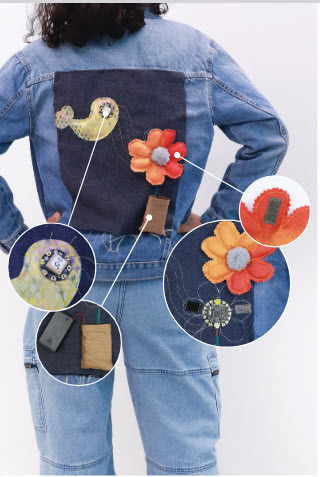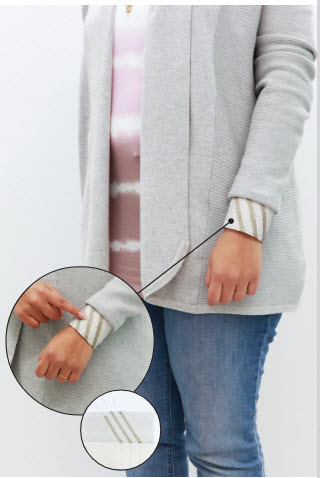This pictorial presents a design research exploration of domestic sewing machines as hybrid craft tools for creating e-textile circuits. Through iterative making and experimentation, we examine how conductive materials and electronic components can be integrated into fabric using sewing machines. We contribute 11 techniques for securely terminating connections (T1-T4), insulating wires (I1-I4), and design possibilities for sewing LEDs and electronic components (A1-A3). We also introduce four types of machine-sewn sensors (S1-S4) for interactivity and present four high fidelity prototypes of machine-sewn circuits. To further explore the creative potential of these techniques, we engaged in a case study with a craft practitioner that uncovers design insights and limitations. Reflecting on these explorations, we highlight the
role of sewing machines in democratizing e-textile design and advancing their use as accessible tools for hybrid fabrication.
This research is published here: https://doi.org/10.1145/3715336.3735416
Applications of Machine-Sewn Sensors

BloomTracker Denim
E-Sewing Techniques: T4, I2, A1, S3, S4.
As a practical application fabric, we
identified denim to be durable and sturdy for holding wearable components. We designed
BloomTracker, a denim jacket with a machine-sewn GPS sensor for children during outdoor activities. The decorative, but functional,
design on the back features a flower-in-pot and bird, created using a darning presser foot. The flower’s petals attach via Velcro, allowing them to be removed and reveal a
FLORA microcontroller hidden beneath. The bird’s eye houses a GPS module connected to the FLORA (A1), enabling real-time location tracking. One of the petals, filled with conductive fibres, is a squeeze sensor
(S4) that interacts with the FLORA through conductive Velcro (S3). To keep the design sleek and practical, the battery is discreetly hidden inside the flowerpot with the wires satin stitched (I2) to the fabric. The jacket
blends creativity, safety, and wearable tech into one stylish garment.
SlideSense Cardigan
E-Sewing Techniques: S1, I4, T2, T4, A1.
To experiment with the augmentation of sensors, we designed the SlideSense Cardigan with a machine-sewn slide sensor
(S1) embedded in the sleeve cuff. Made with conductive fabric and sewn with conductive thread, the sensor connects to a
microcontroller (T4), enabling gesture-based controls. The discreet placement ensures it blends seamlessly into the cardigan’s design
without compromising style. The slide sensor has potential applications such as adjusting
music volume, scrolling through presentation slides, or controlling smartphone interactions with a simple swipe.

Acknowledgement of Funding
This project was funded by the National Sciences and Engineering Research Council of Canada (NSERC) through a Discovery Grant (2021-04135) and a Research Tools and Instruments (RTI) Grant (2021-00079), as well as through a Queen’s University Research Initiation Grant (RIG). We acknowledge the support of Ontario Research Fund and the Canada Foundation for Innovation (CIF) for this research.